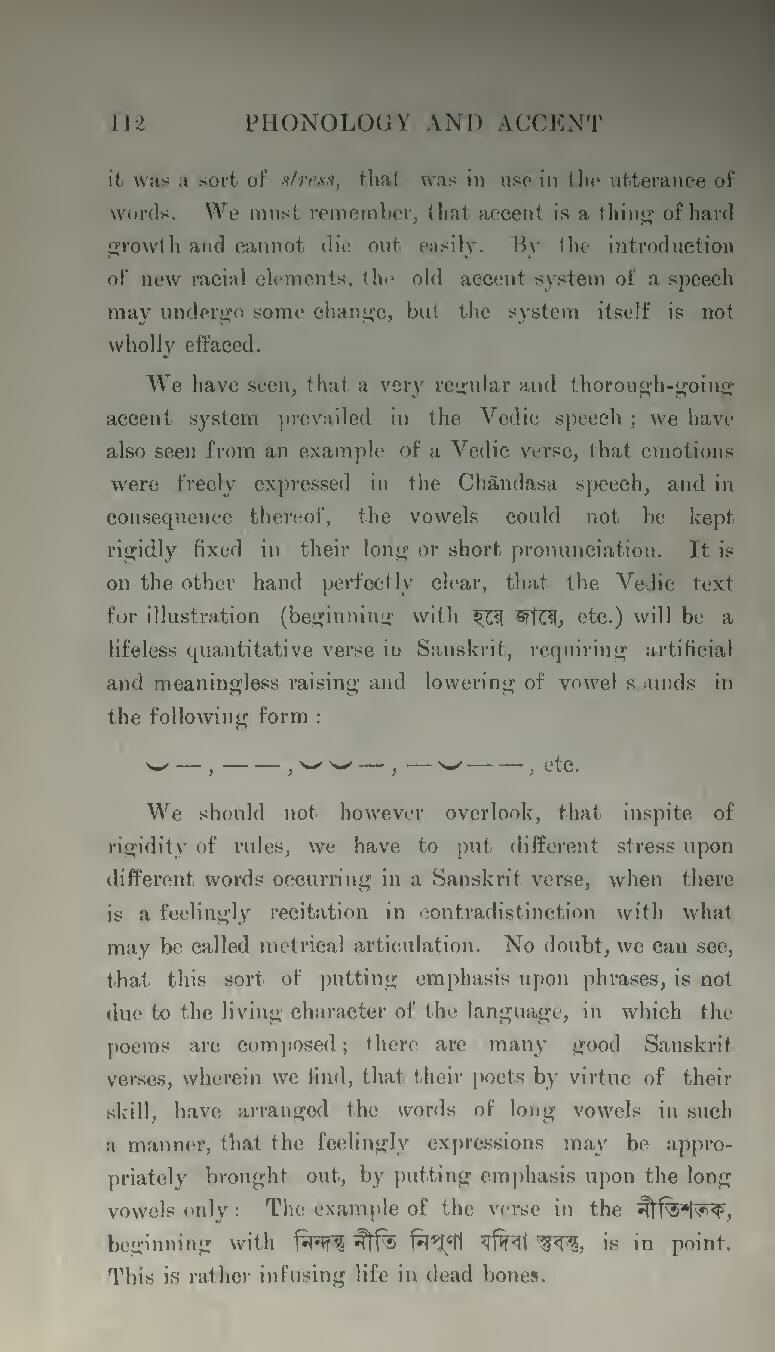it was a sort of stress, that was in use in the utterance of words. We must remember, that accent is a thing of hard growth and cannot die out easily. By the introduction of new racial elements, the old accent system of a speech may undergo some change, but the system itself is not wholly effaced.
We have seen, that a very regular and thorough-going accent system prevailed in the Vedic speech; we have also seen from an example of a Vedic verse, that emotions were freely expressed in the Chāndasa speech, and in consequence thereof, the vowels could not be kept rigidly fixed in their long or short pronunciation. It is on the other hand perfectly clear, that the Vedic text for illustration (beginning with হয়ে জায়ে, etc.) will be a lifeless quantitative verse in Sanskrit, requiring artificial and meaningless raising and lowering of vowel sounds in the following form:
˘ ¯, ¯ ¯, ˘ ˘ ¯, ¯ ˘ ¯ ¯, etc.
We should not however overlook, that inspite of rigidity of rules, we have to put different stress upon different words occurring in a Sanskrit verse, when there is a feelingly recitation in contradistinction with what may be called metrical articulation. No doubt, we can see, that this sort of putting emphasis upon phrases, is not due to the living character of the language, in which the poems are composed; there are many good Sanskrit verses, wherein we find, that their poets by virtue of their skill, have arranged the words of long vowels in such a manner, that the feelingly expressions may be appropriately brought out, by putting emphasis upon the long vowels only: The example of the verse in the নীতিশতক, beginning with নিন্দন্তু নীতি নিপুণা যদিবা স্তবন্তু, is in point. This is rather infusing life in dead bones.
